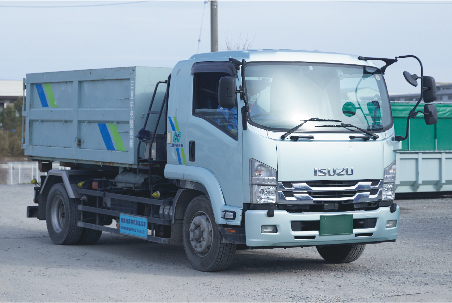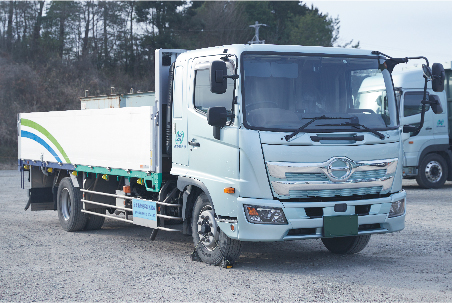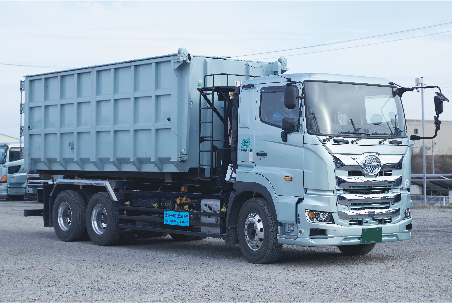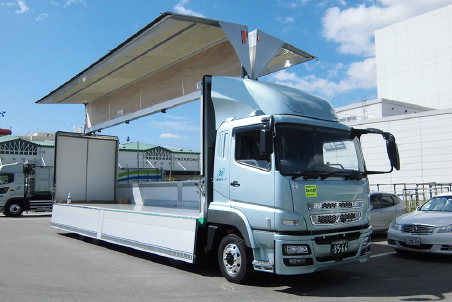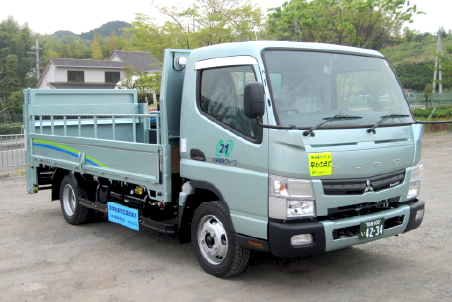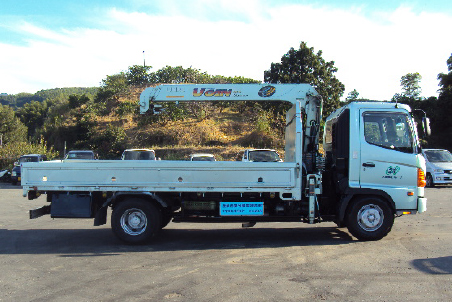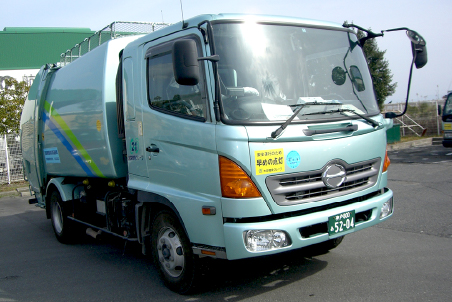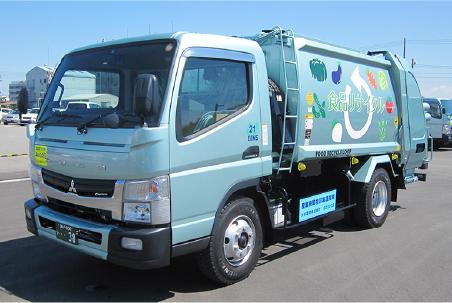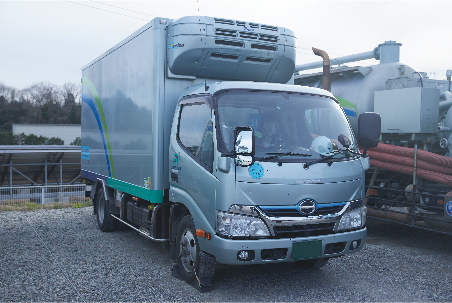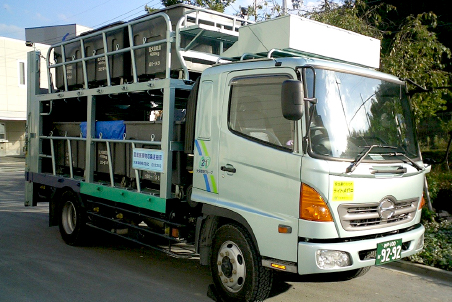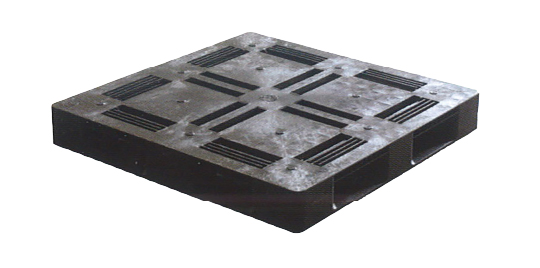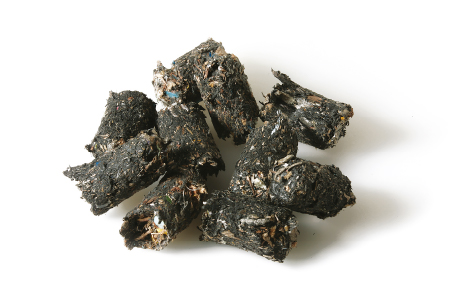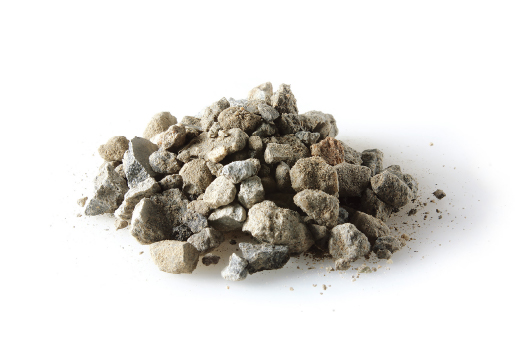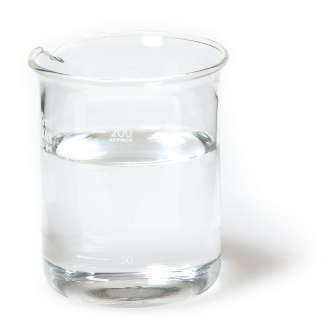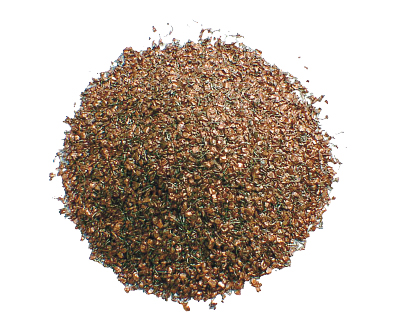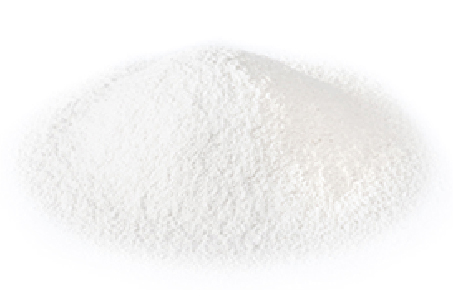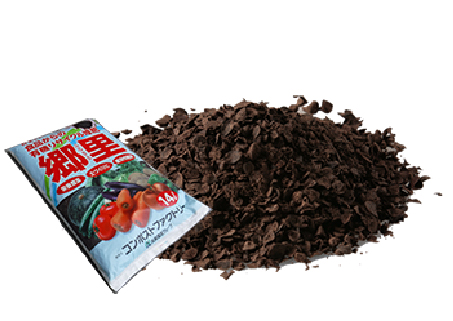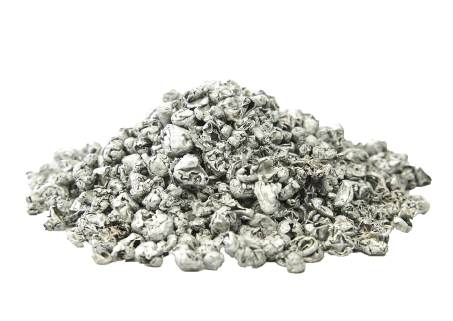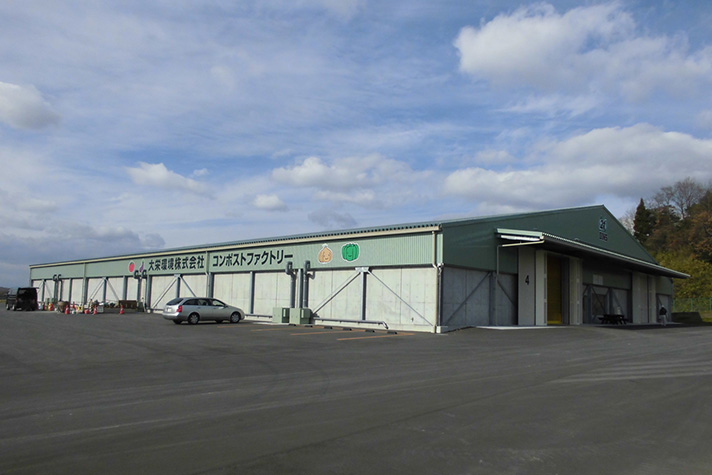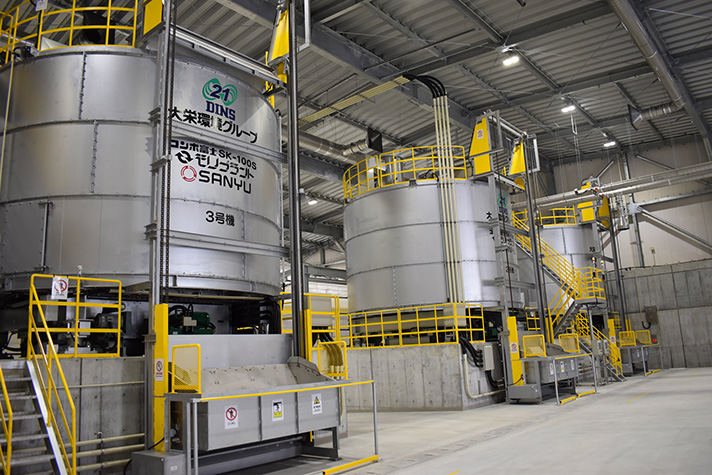Waste Management and
Recycling
Providing One-Stop Service Systems
Using Waste Materials Redefined
as Priceless Resources for Recycling
The Daiei Kankyo Group conducts a waste management and recycling
business with one-stop service system, from collection and transportation,
intermediate treatment, recycling to final disposal and contributions to local areas.
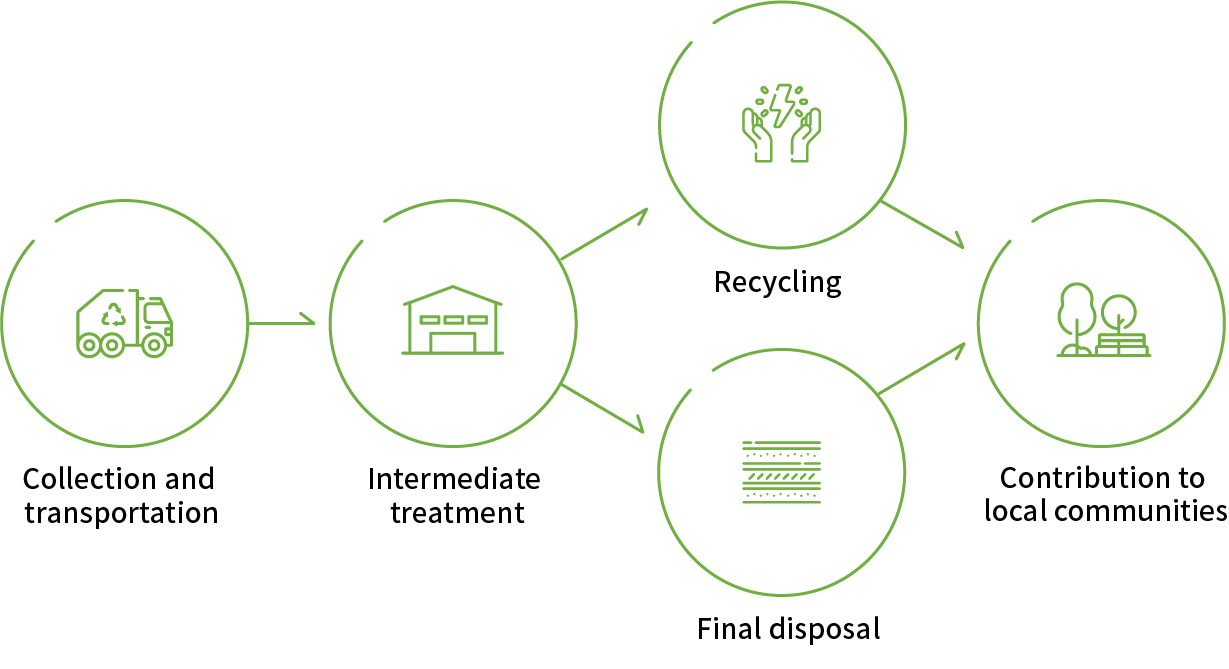
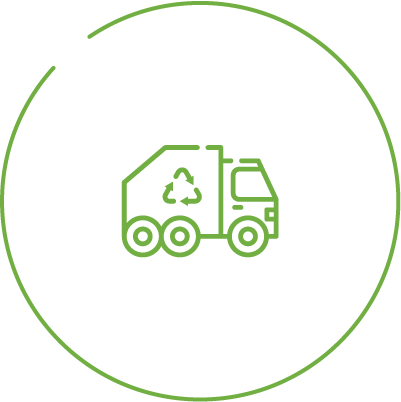
Collection and
transportation
- A fleet of collection and transportation trucks
for managing various waste materials - Roughly700trucks
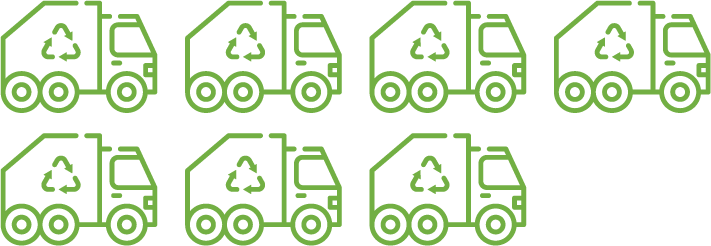
- ocean containers
- Roughly800
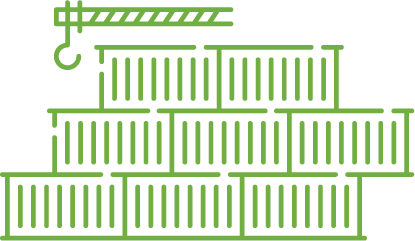
We possess roughly 700 waste collection and transportation vehicles and roughly 800 ocean containers. From Tohoku in the north to Okinawa in the south, with our resource recycling network of more than 30 recycling and other facilities, we are able to offer collection services across a vast area, centered on the Kansai, Chubu and Kanto regions.
Collection and
Transportation Trucks
Opens a popup window
Ocean containers (modal shift)
We utilize sea transportation due to its ability to transport large volumes and its minor carbon dioxide emissions. It also plays an active role in wide-area treatment in the event of a disaster.
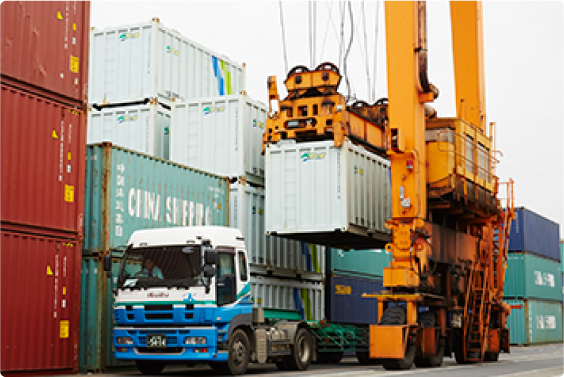
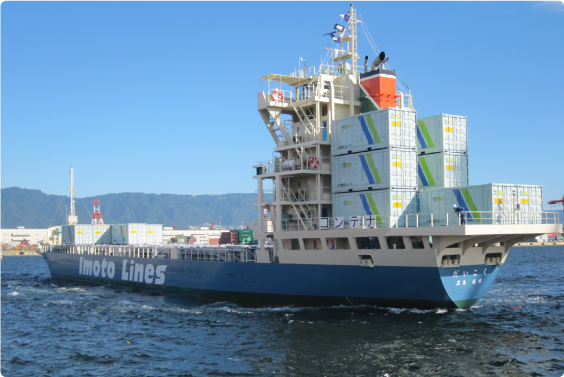

Intermediate
treatment
- Sorting, crashing and recycling facilities
Total permitted capacity - 56,295tons per day
*As of April 2024
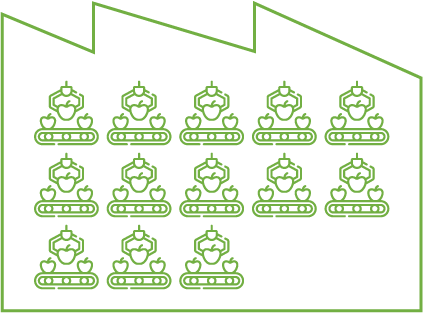
We collect recyclable resources using rigorous sorting procedures. With our rich experience, we effectively treat materials to maximize the amount of resources that can be recycled.
- Incineration, gasification and roasting facilities
Total incineration capacity - 2,412tons per day
*As of April 2024

We are promoting innovative initiatives by using the heat that is generated by the incineration process to not only producing electricity but also using it as energy to distill the water that accumulates at the final disposal sites.
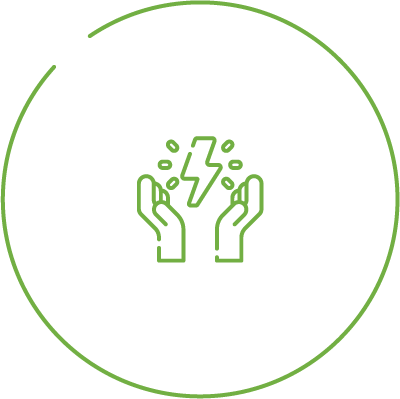
Recycling
- Resources recycled in FY2021
- 660,142tons per Year
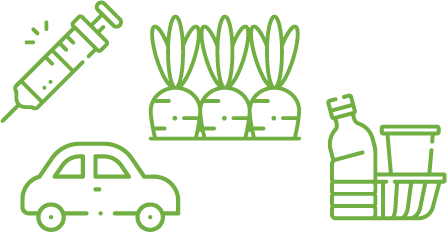
We recycle various types of waste at our facilities with utmost consideration for the environment in accordance with recycling laws and regulations. We return the recycled products which have been reborn as new resources to life-styles and industry in order to help realize a resource-recycling society.
Main Recycled Products
Opens a popup window
Types of recycling
Containers and packaging
We receive waste plastics collected by municipalities, carry out sorting, compacting, and packing. Afterwards, we are entrusted with recycling operations through a bidding process with the Japan Containers and Packaging Recycling Association. Using our advanced systems, we recycle the waste plastics as recycled pellets and process the pellets to pallets for transportation, which are then sold.
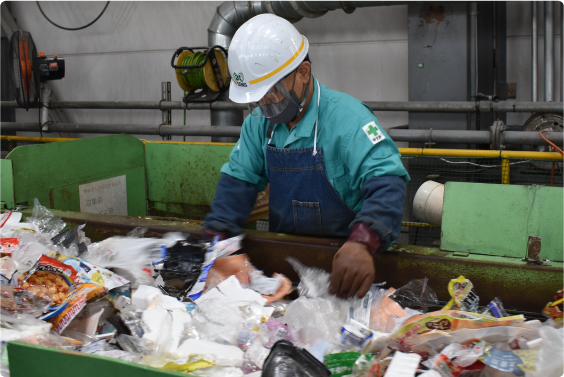
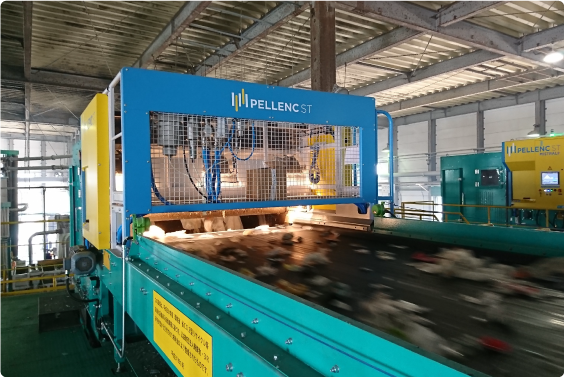
Plastics
“The Law Concerning the Promotion of Resource Recycling of Plastics," which was enforced in April 2022, is driving the recycling of plastics in various ways. The Daiei Kankyo Group is committed to recycling plastics through a variety of actions, including material recycling, in which waste plastics are collected, cleaned, crushed, and recycled as raw materials for distribution pallets, plastic bottles, and other products, chemical recycling, in which miscellaneous waste plastics are converted to gas and methanol as raw materials, and thermal recycling, in which uses the heat energy generated during plastic incineration to generate electricity.
Resource recycling of plastics Press Release(JP)
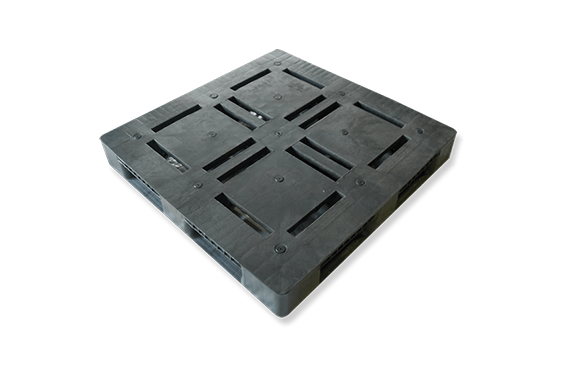
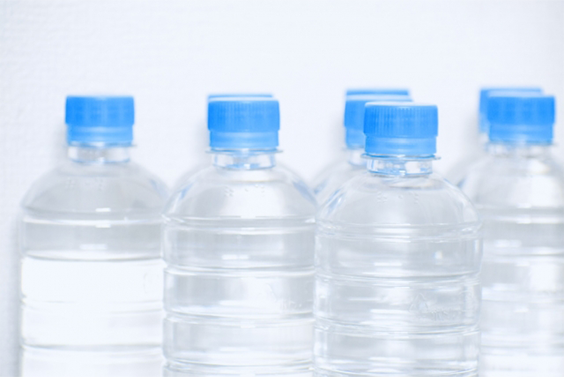
Food products
We manufacture high-quality compost by fermenting the waste vegetables, meat, fish and other food products mainly generated by supermarkets and food processing factories. The foods grown using this compost are then also sold in stores in a food recycling loop. We construct a biogas electricity generation facility that will make use of methane fermentation. By utilizing food waste in such ways, we are helping to realize a decarbonized society.
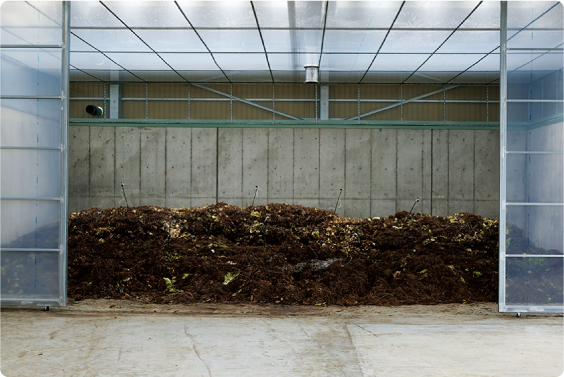
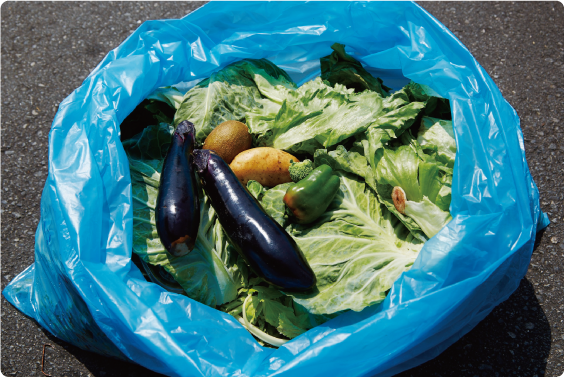
Facilities
Opens a popup window
Buildings
Since the waste from construction site contains a variety sediment and other unwanted components, demand for stringent sorting of these materials is high. At the Daiei Kankyo Group, we use our unique expertise to create highly effective treatment systems. With our sorting technology, separated gypsum board is used as a base material for the creation of new gypsum board, yet it is also used in high value-added ground improvement materials. Rubble is also reused as a material in civil engineering, for example as paving for roads and other purposes.
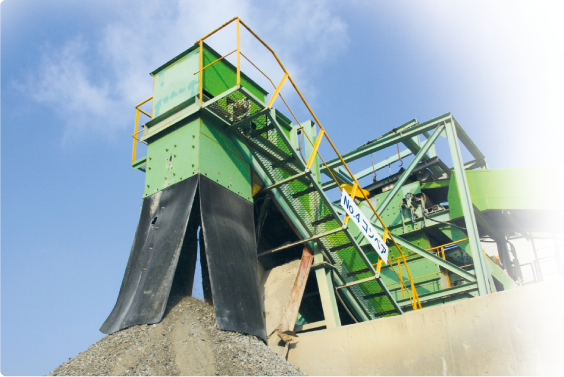
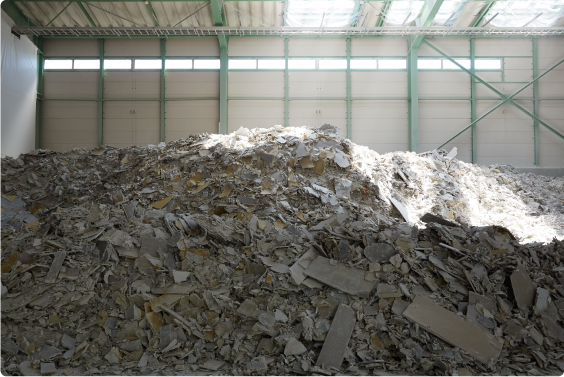
Automobiles
We are commissioned by both the multinational TH Team, whose members include Toyota and Honda, and the ART Team which features Nissan and Mazda, to recycle automotive shredder residue (ASR) from the crushing of automobiles.
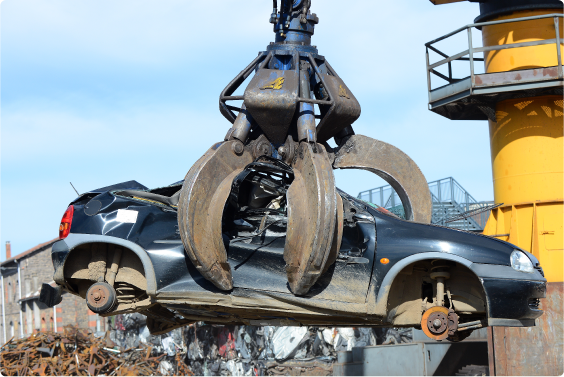
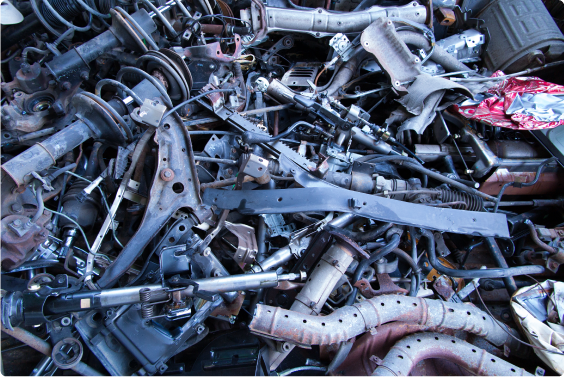
Small home electronics
We collect rare and useful metals such as copper and aluminum from disused small home electronics. The process of recovering parts which contain large amounts of rare metals is conducted entirely by hand, and components such as hard disks which may contain personal information are physically destroyed using a dedicated machine to prevent the leaking of data.
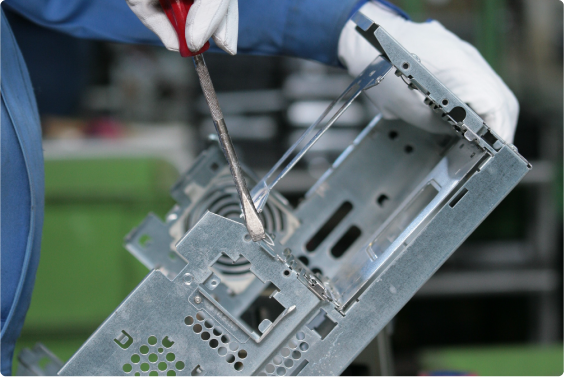
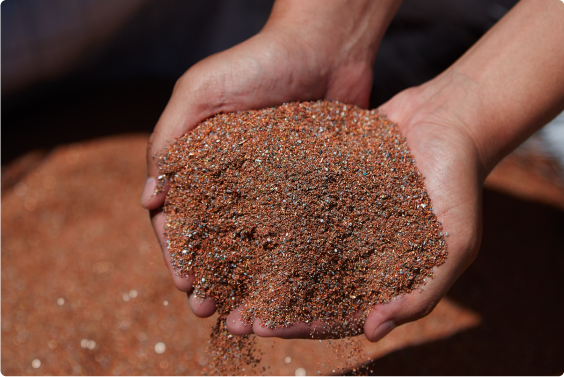
Aluminum cans
We effectively recycle the aluminum cans we purchase as a resource. Aluminum cans are processed into aluminum pellets and sold as a blast furnace secondary raw material (deoxidizer).
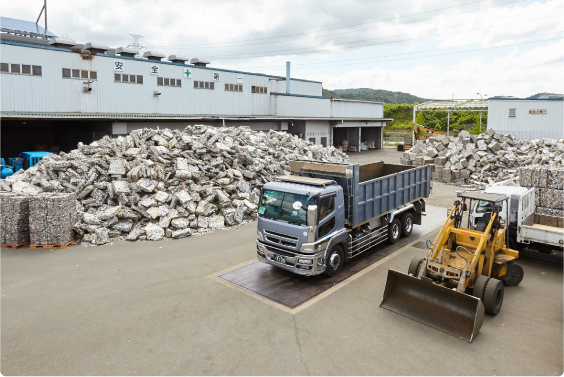
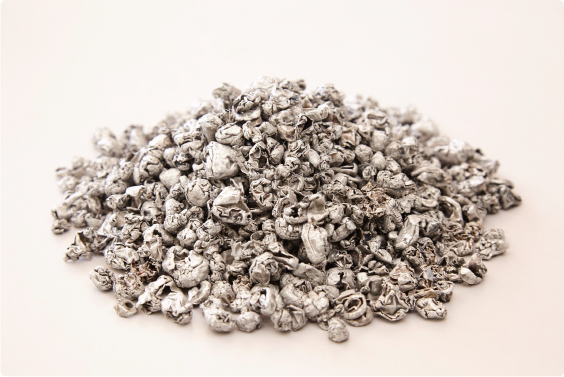
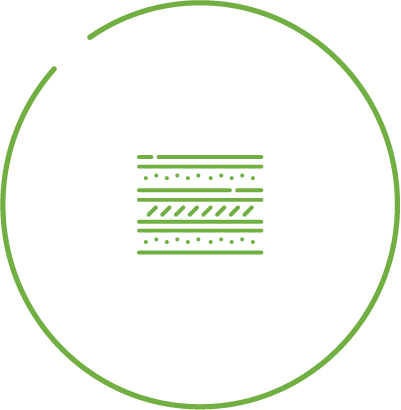
Final disposal
- Total permitted capacity at final disposal sites
- 31,793,000m3
*As of April 2024
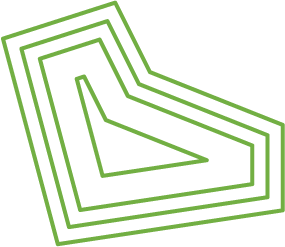
We appropriately dispose of non-recyclable waste materials as landfill at final disposal sites across seven regions. We keep a close eye on the impact to the surrounding environment through thorough monitoring and management.
Maintenance and management of final disposal sites
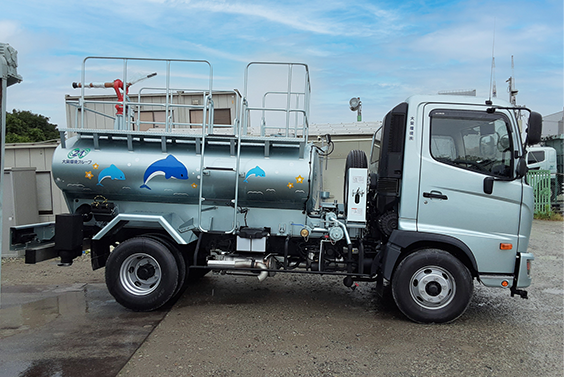
Covering soil and sprinkling water
The "sandwich cell method" is used to prevent scattering of waste when it is buried in the disposal site. Regular water sprinkling also reduces dust and soil scattering.
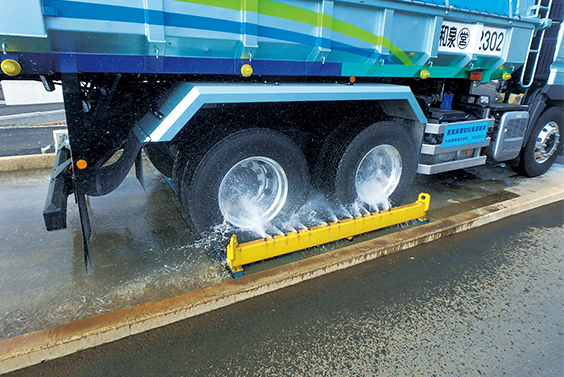
Tire cleaning
Trucks that have driven through the disposal site may have tires covered with dirt. To avoid contaminating the surrounding roads, trucks going out of the site are thoroughly remove soil with a tire washer before driving.
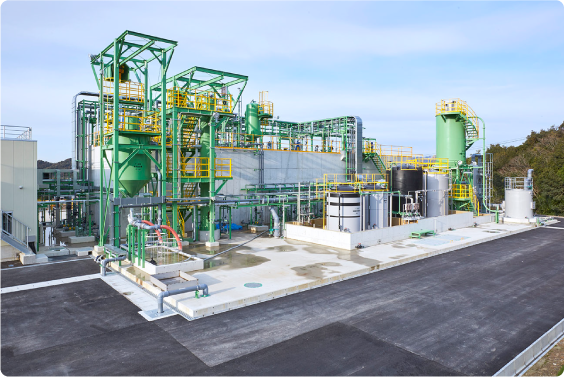
Water treatment facilities
Accumulated water that is generated at final disposal sites is purified using organic, adsorption, membrane and other treatments. Following purification, the discharged water is constantly monitored to ensure it meets our standards.
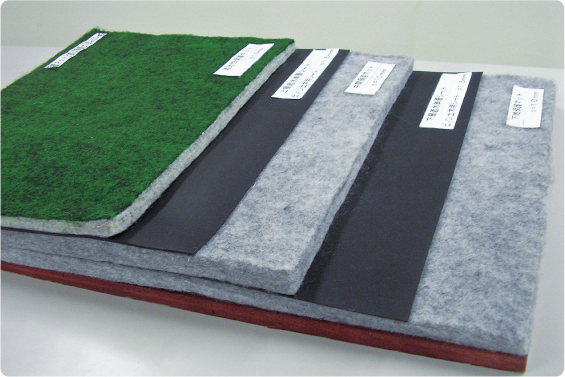
Water shielding sheet
The rainwater that falls on our final disposal sites seeps into the ground to where waste material is buried. In order to collect this water and direct it to the treatment facilities, the insides of the disposal sites are covered with water shielding sheets. A five-layer structure consisting of two layers of water shielding sheets protected by three layers of nonwoven fabric provides a complete leakage prevention system.
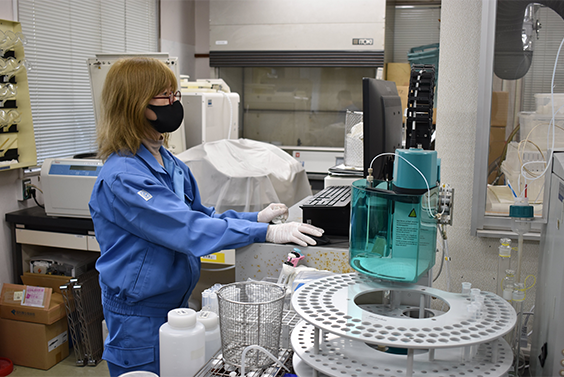
Monitoring
To ensure that leachate prevented by water shielding work is not infiltrating into the ground, we periodically conduct comparative tests of water quality upstream and downstream of the groundwater.
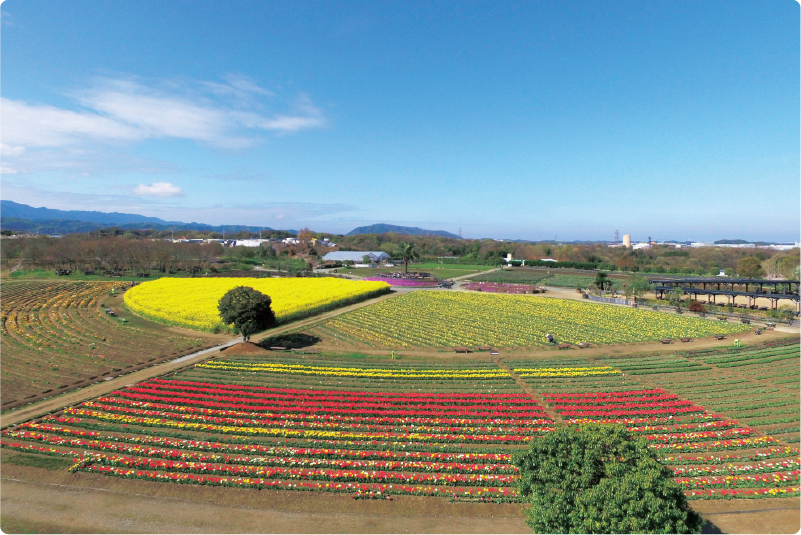
Securing the remaining capacity and utilization of the former final disposal site
While continuously expanding and building new facilities, we aim to achieve zero landfill of organic and recyclable waste after the fiscal year ending March 2031, and to secure the remaining capacity of the final disposal site and promote recycling.
We are also utilizing the former final disposal by turning it into a park as the "Izumi Recycling Environment Park" to give back to the local community. Even after the landfill is completed, we ensure that the site is maintained and managed thoroughly, taking into consideration its impact on the surrounding environment.


